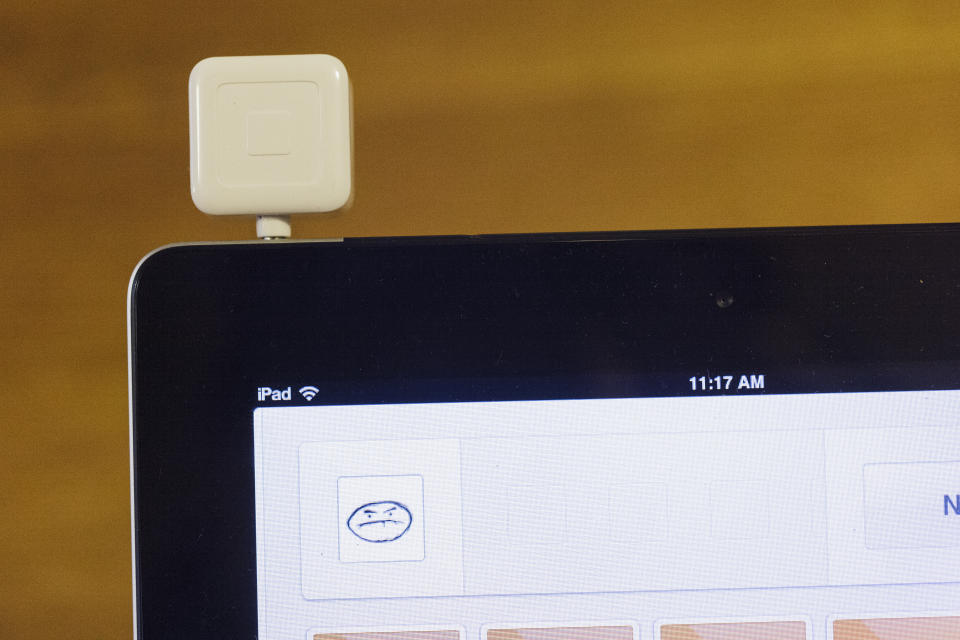Square is positioned to be a winner by helping small businesses digitize post-pandemic: Oppenheimer
Square shares are up 146% in 2020 so far, and analysts at Oppenheimer think the stock can still go higher.
On Thursday, Oppenheimer upgraded Square (SQ) to outperform, with a price target of $185. (The all-time high was $166 on Sept. 1; shares were trading at around $152 on Thursday afternoon.) The upgrade is based on the growth of Square’s Cash App, and on the company’s opportunity to help merchants transition to e-commerce.
But really, the note is a post-pandemic vote of confidence.
As Oppenheimer writes, the COVID-19 pandemic has initiated a “massive shift in digital commerce, requiring merchants to rapidly adopt omni-channel solutions.” Of course, it was already obvious before the pandemic that the retail landscape was barreling toward e-commerce, but the pandemic has sent the trend into hyperdrive. Walmart, Target, and Best Buy reported enormous surges (100%+) in digital sales in Q2; online-only retailers Etsy and Wayfair blew out their Q2 earnings; Dick’s Sporting Goods is thriving thanks to a combination of online sales and curbside pickup.

All of those are big retail names. Square’s bread and butter are SMBs (small and medium-sized businesses), which also need to immediately prioritize their e-commerce presence, if they didn’t already. Hundreds of thousands of small business have shut down due to the pandemic, but those that have survived will need to beef up their digital presence.
Oppenheimer believes Square is well-suited to serve those small businesses coming out of the pandemic, positioning Square “for outsized share gains as economic activity normalizes.”
Oppenheimer pegs Square’s TAM (total addressable market, the “it” tech stat of the moment) at $160 billion, and within that, puts Cash App’s TAM at $63 billion, noting that “by reinvesting profits from prior Cash App cohorts, combined with its seller ecosystem, Square can develop significant network effects and products that will be challenging for other neo-banks to replicate in the digital wallet space.”
In other words, Square has an advantage over banks in the mobile payments race.
Oppenheimer also notes the “impressive volume and gross profit growth” of Cash App’s bitcoin trading feature. Square enabled bitcoin trading within Cash App in 2018. It reaped $875 million in bitcoin revenue in the second quarter, up 600% year over year, and $17 million in bitcoin gross profit, up 711% year over year. ($17 million is small for a company with $4.17 billion in revenue in 2019, but the growth is the point.) Oppenheimer cites the growth in bitcoin revenue as proof of “the scalability in the Cash App business model.”
Bitcoin has been a noted (and some believe problematic) obsession of CEO Jack Dorsey.

Square has always touted that it serves both sides of the small business equation: sellers (i.e., businesses, through its point of sale hardware, payroll software, and Square Capital loan business) and shoppers (consumers paying with Square devices and/or using Cash App). Oppenheimer writes that this “two-sided network” will make Square “a structural winner during the recovery.”
Of course, there’s an obvious downside case against Square: “Economic pressures persist longer than anticipated” if the pandemic drags on or even worsens, hitting small businesses harder; “competitive responses dampen growth,” and Square certainly has big competitors, including FIS (which acquired Worldpay last year), PayPal, ShopKeep, and Shopify; and if “new product launches and adoption slow,” which will be up to Dorsey and Square’s own pace of innovation.
Oppenheimer sees Square profit growing at a 37% annual rate from the end of 2020 through the end of 2022. Square was Yahoo Finance’s Company of the Year in 2018.
—
Daniel Roberts is an editor-at-large at Yahoo Finance and closely covers fintech and payments. Follow him on Twitter at @readDanwrite.
Read more:
Why bitcoin and altcoins are hot again this summer
What you need to know about Ant Financial, potentially the largest IPO in history
Ant Financial’s core product Alipay hits the 1 billion users mark
Etsy CEO on huge Q2: Etsy is 'becoming much more mainstream'
Amazon tells employees to delete Tik Tok, then says email was ‘sent in error’
